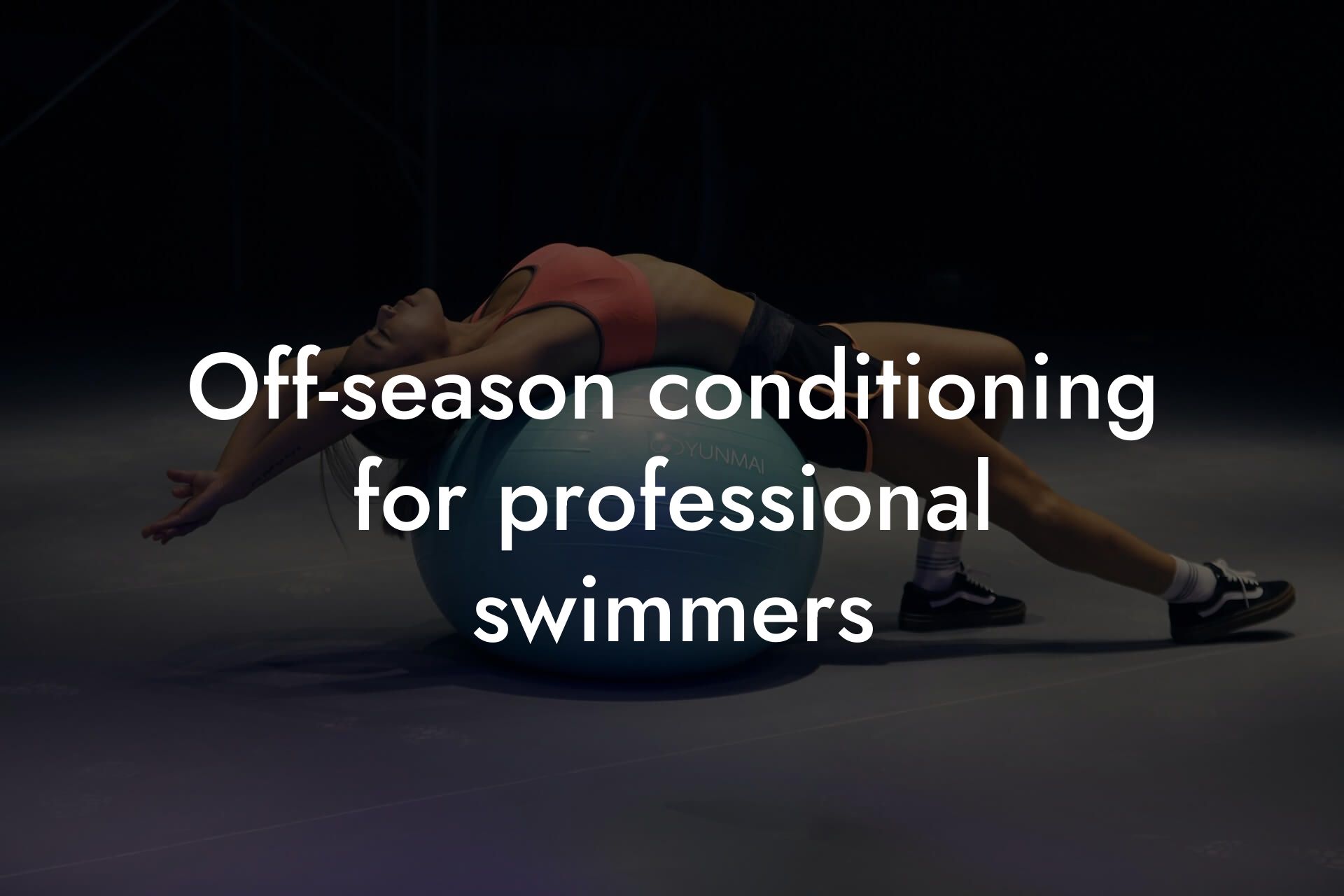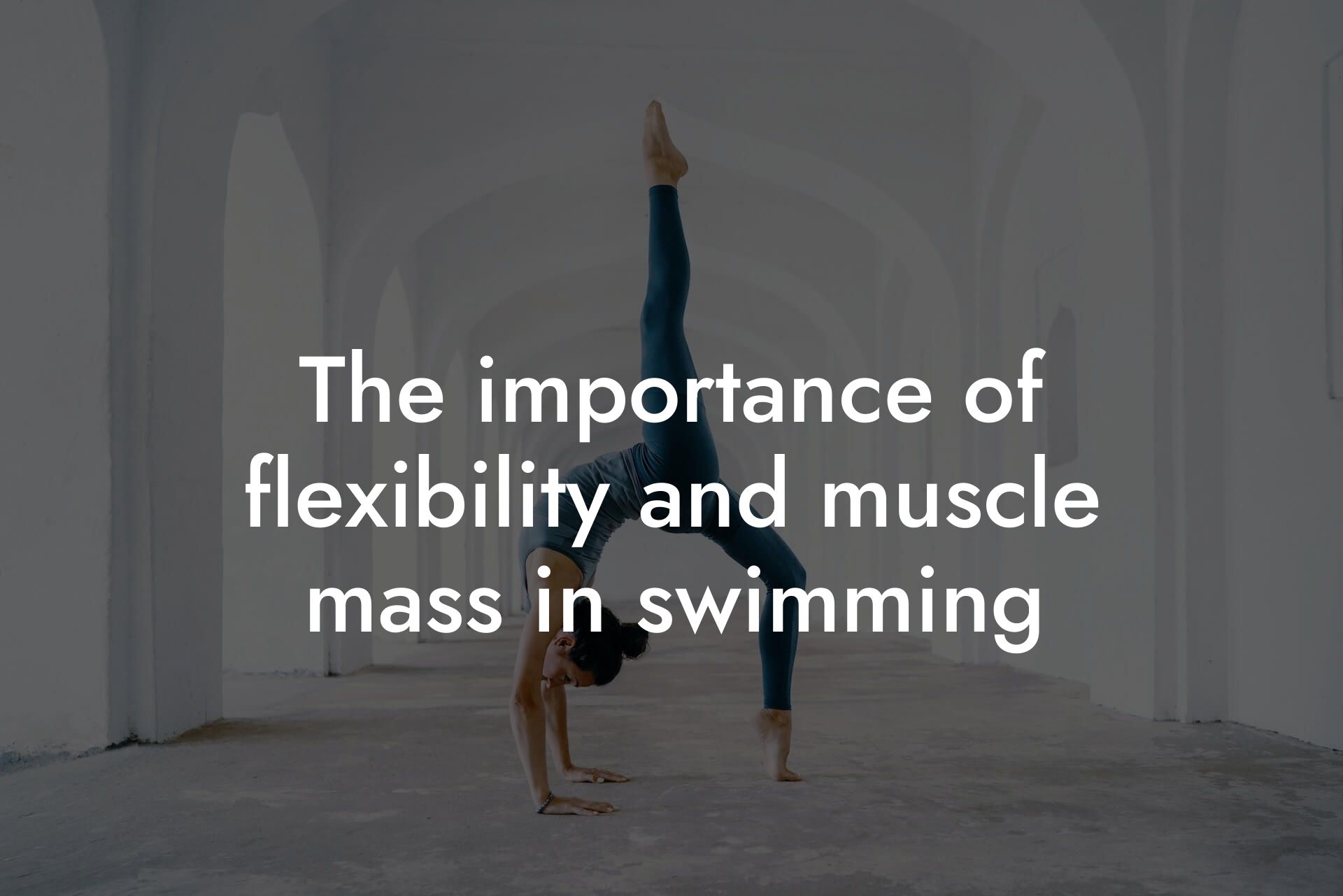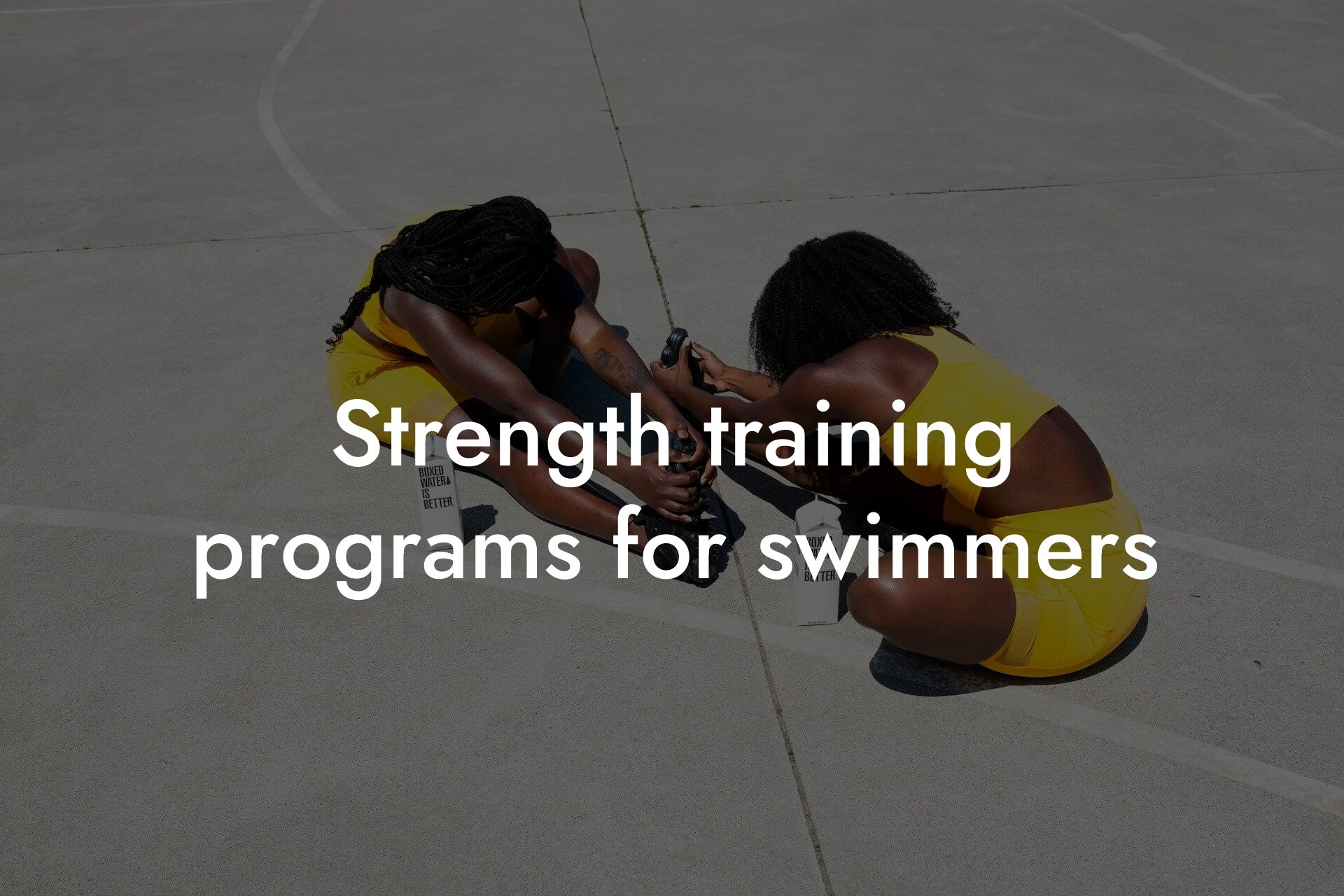As a high-earning professional, you understand the importance of maintaining a healthy and fit physique. Swimming is an excellent way to stay active, but it can also put a significant amount of stress on your bones. Bone density plays a crucial role in injury prevention, especially in swimming. In this article, we will delve into the world of bone density, its impact on injury prevention, and how it affects swimmers.
Table of Contents
What is Bone Density?
Bone density refers to the measure of how much calcium and other minerals are present in your bones. It is an important indicator of bone health, as it determines the strength and durability of your bones. Peak bone density is typically reached in early adulthood, and it gradually declines with age. Factors such as genetics, diet, exercise, and hormones can influence bone density.
Why is Bone Density Important for Swimmers?
Swimming is a low-impact sport, but it can still put a significant amount of stress on your bones, particularly in the shoulders, elbows, and wrists. Repetitive movements, such as the freestyle stroke, can cause micro-fractures in the bones, leading to injuries. Swimmers with low bone density are more susceptible to these injuries, which can be debilitating and affect their performance.
The Risks of Low Bone Density for Swimmers
Low bone density can increase the risk of injuries in swimmers, including:
• Stress fractures: Hairline cracks in the bones that can occur due to repetitive stress.
• Osteoporosis: A condition characterized by brittle and porous bones, making them more prone to fractures.
• Tendinitis: Inflammation of the tendons, which can be caused by repetitive stress on the bones.
• Bone bruises: Trauma to the bones that can cause pain and discomfort.
How to Measure Bone Density
Bone density can be measured using a variety of techniques, including:
• Dual-Energy X-ray Absorptiometry (DEXA): A non-invasive test that uses X-rays to measure bone density.
• Quantitative Computed Tomography (QCT): A CT scan that uses X-rays to measure bone density.
• Ultrasound: A non-invasive test that uses high-frequency sound waves to measure bone density.
At Tano Performance Group, we use DEXA machines to provide a complete body assessment, including bone density measurements. This information can help you identify areas for improvement and develop a personalized training plan to optimize your bone health.
Ways to Improve Bone Density for Swimmers
Fortunately, there are several ways to improve bone density and reduce the risk of injuries in swimmers:
• Resistance training: Incorporating resistance exercises, such as weightlifting, can help improve bone density.
• Calcium and vitamin D supplements: Ensuring adequate intake of calcium and vitamin D can help support bone health.
• Proper nutrition: A balanced diet rich in nutrients, such as protein, can help support bone health.
• Low-impact exercises: Incorporating low-impact exercises, such as cycling or elliptical training, can help reduce the stress on bones.
• Proper technique: Focusing on proper technique and form can help reduce the risk of injuries and improve bone density.
Bone density plays a critical role in injury prevention for swimmers. By understanding the importance of bone density, measuring it regularly, and taking steps to improve it, swimmers can reduce their risk of injuries and optimize their performance. At Tano Performance Group, we are committed to providing high-earning professionals with the information and tools they need to achieve their fitness goals. By incorporating bone density measurements into your training plan, you can take your performance to the next level.
Take Control of Your Bone Density Today
Don't let low bone density hold you back from achieving your fitness goals. Contact Tano Performance Group today to schedule a DEXA scan and take the first step towards optimizing your bone health. With our expert guidance and support, you can improve your bone density and reduce your risk of injuries, allowing you to perform at your best.
Frequently Asked Questions
What is bone density and why is it important for swimmers?
Bone density refers to the measure of how dense and strong your bones are. It's essential for swimmers because it can affect their performance, injury risk, and overall health. Low bone density can lead to osteoporosis, fractures, and other bone-related issues, which can be detrimental to a swimmer's career.
How does swimming affect bone density?
Swimming is a low-impact sport, which means it can help improve bone density, especially in the upper body. However, it may not be as effective for building bone density in the lower body compared to high-impact activities like running or jumping. This is because swimming doesn't involve weight-bearing exercises that stimulate bone growth.
What are the risks of low bone density for swimmers?
Low bone density can increase the risk of injuries, such as fractures, stress fractures, and osteoporosis. It can also lead to chronic pain, decreased mobility, and a higher risk of osteoarthritis. For swimmers, low bone density can be particularly problematic, as it can affect their performance and ability to train.
How can swimmers improve their bone density?
Swimmers can improve their bone density by incorporating strength training exercises, such as weightlifting, resistance band exercises, or bodyweight exercises, into their training routine. They should also focus on exercises that target the core, legs, and hips, as these areas are essential for swimming performance.
What role does nutrition play in bone density for swimmers?
Nutrition plays a critical role in bone density for swimmers. A diet rich in calcium, vitamin D, and protein can help support bone health. Swimmers should also ensure they're getting enough calories to support their energy needs, as inadequate nutrition can lead to bone loss.
Can bone density be measured?
Yes, bone density can be measured using a variety of techniques, including dual-energy X-ray absorptiometry (DXA), peripheral dual-energy X-ray absorptiometry (pDXA), and quantitative computed tomography (QCT). These tests can help identify low bone density and provide a baseline for monitoring changes over time.
What is the ideal bone density for swimmers?
The ideal bone density for swimmers varies depending on factors such as age, sex, and body composition. Generally, a bone density T-score of -1 or higher is considered normal, while a T-score of -2.5 or lower indicates osteoporosis.
How often should swimmers get their bone density checked?
Swimmers should get their bone density checked annually, especially if they're over 30 or have a history of bone-related injuries. Regular check-ups can help identify any changes in bone density and allow for early intervention.
Can swimming injuries be prevented with good bone density?
Good bone density can help reduce the risk of swimming injuries, but it's not a guarantee. Swimmers should still take steps to prevent injuries, such as warming up properly, stretching regularly, and incorporating strength training exercises into their routine.
How does bone density affect swimming performance?
Good bone density can improve swimming performance by increasing power, speed, and endurance. It can also reduce the risk of injuries, which can help swimmers train more consistently and achieve their goals.
What are some common bone density myths among swimmers?
One common myth is that swimming is enough to maintain good bone density. Another myth is that bone density is only a concern for older swimmers. However, bone density is important for swimmers of all ages, and a comprehensive training program should include exercises that target bone health.
Can bone density be improved at any age?
Yes, bone density can be improved at any age. While it's easier to build bone density during childhood and adolescence, adults can still make significant improvements with the right training and nutrition.
How does menopause affect bone density in female swimmers?
Menopause can lead to a decline in bone density in female swimmers, particularly in the spine and hips. This is because estrogen levels decrease during menopause, which can affect bone health. Female swimmers should take extra precautions to maintain good bone density during this time.
Can bone density be affected by genetics?
Yes, bone density can be affected by genetics. Swimmers with a family history of osteoporosis or low bone density may be more likely to experience bone-related issues. However, this doesn't mean they can't take steps to improve their bone density.
How does bone density affect swimming technique?
Good bone density can improve swimming technique by increasing power, speed, and efficiency. It can also reduce the risk of injuries, which can help swimmers maintain proper technique and avoid developing bad habits.
What are some exercises that can help improve bone density in swimmers?
Exercises that can help improve bone density in swimmers include squats, lunges, deadlifts, bench press, and rows. These exercises target the core, legs, and hips, which are essential for swimming performance.
How does bone density affect swimming recovery?
Good bone density can aid in swimming recovery by reducing the risk of injuries and improving overall health. This can help swimmers recover faster and more efficiently, which can improve their performance over time.
Can bone density be improved with supplements?
While supplements can be helpful, they should not be relied upon as the sole means of improving bone density. A balanced diet and regular exercise are essential for maintaining good bone health. Consult with a healthcare professional before adding any supplements to your routine.
How does bone density affect swimming longevity?
Good bone density can help swimmers maintain a long and healthy career by reducing the risk of injuries and improving overall health. This can help swimmers continue to perform at a high level well into their 30s, 40s, and beyond.
What are some common bone density mistakes swimmers make?
One common mistake is neglecting strength training exercises, which can lead to poor bone density. Another mistake is not getting enough calcium and vitamin D in their diet. Swimmers should prioritize bone health as part of their overall training program.
How can swimmers balance bone density with other training goals?
Swimmers can balance bone density with other training goals by incorporating exercises that target multiple areas at once. For example, a strength training exercise like squats can improve bone density while also improving swimming performance.
What role does stress play in bone density for swimmers?
Chronic stress can negatively affect bone density in swimmers by increasing the production of cortisol, a hormone that can break down bone tissue. Swimmers should prioritize stress management techniques, such as meditation or yoga, to reduce their risk of bone-related issues.
How can swimmers monitor their bone density progress?
Swimmers can monitor their bone density progress by tracking their exercise routine, nutrition, and overall health. They should also schedule regular bone density tests to track changes over time and make adjustments to their training program as needed.
Here are some related articles you might love...
- Off-season conditioning for professional swimmers
- The importance of flexibility and muscle mass in swimming
- Strength training programs for swimmers
- Using DEXA scans to optimize swimmer performance
- Recovery techniques for swimmers after intense training
- Balancing strength and endurance in swimming
- Nutrition strategies for swimmers to maintain energy levels
- The role of body composition in swimming speed and endurance
- Reducing body fat for better buoyancy and speed in swimming
Zak Faulkner
Zak Faulkner is a leading authority in the realm of physical health and body composition analysis, with over 15 years of experience helping professionals optimise their fitness and well-being. As one the experts behind Tano Performance Group, Zak has dedicated his career to providing in-depth, science-backed insights that empower clients to elevate their physical performance and overall health.
With extensive knowledge of DEXA technology, Zak specializes in delivering comprehensive body assessments that offer precise data on body fat, muscle mass, bone density, and overall physique. His expertise enables individuals to make informed decisions and achieve their fitness goals with accuracy and confidence. Zak’s approach is rooted in a deep understanding of human physiology, combined with a passion for helping clients unlock their full potential through personalised strategies.
Over the years, Zak has earned a reputation for his commitment to excellence, precision, and client-focused service. His guidance is trusted by top professionals who demand the best when it comes to their health. Whether advising on fitness programs, nutritional strategies, or long-term wellness plans, Zak Faulkner’s insights are a valuable resource for anyone serious about taking their health and fitness to the next level.
At Tano Performance Group, Zak continues to lead our Content Team revolutionising how professionals approach their physical health, offering unparalleled expertise that drives real results.




